Do you ever find yourself wondering why your four-legged companion can’t seem to get enough of ear rubs? It turns out that there are a variety of scientific and behavioral explanations behind our feline friend’s love for this particular form of affection.
First things first, cats have a distinct ear structure that sets them apart from other animals. Thanks to a combination of delicate nerves, fine hairs, and small muscles, their ears are receptive to touch and can be easily stimulated through massage.
As you rub your cat’s ears, you’re kicking those nerves into high gear, causing pleasant sensations that your furry friend can’t help but purr in response to.
Of course, there’s more to it than just physical pleasure. By allowing their human friend to touch this sensitive area, cats are demonstrating both trust and affection.
Much like us, our feline pals relish a quality head massage, and having their ears rubbed is one of the most intimate ways they can enjoy this type of attention.
It’s always nice to know that our pets appreciate us, and this is certainly true in the case of ear rubs. Whether you’re bonding with your kitty or simply making them feel content, this activity can serve as a meaningful way to strengthen the connection between you and your furry friend.
So let your kitty get lost in blissful purring as you give their ears a nice rubdown, for both of your sakes.
Anatomy of a Cat’s Ear
Well, let me tell you, it’s all thanks to their unique ear anatomy. Without the right anatomy, your pet’s ears wouldn’t be able to do what they do best – hear, detect sounds, and keep your feline friend balanced.
A cat’s ear is divided into three parts – the outer, middle, and inner ear – each with a unique function.
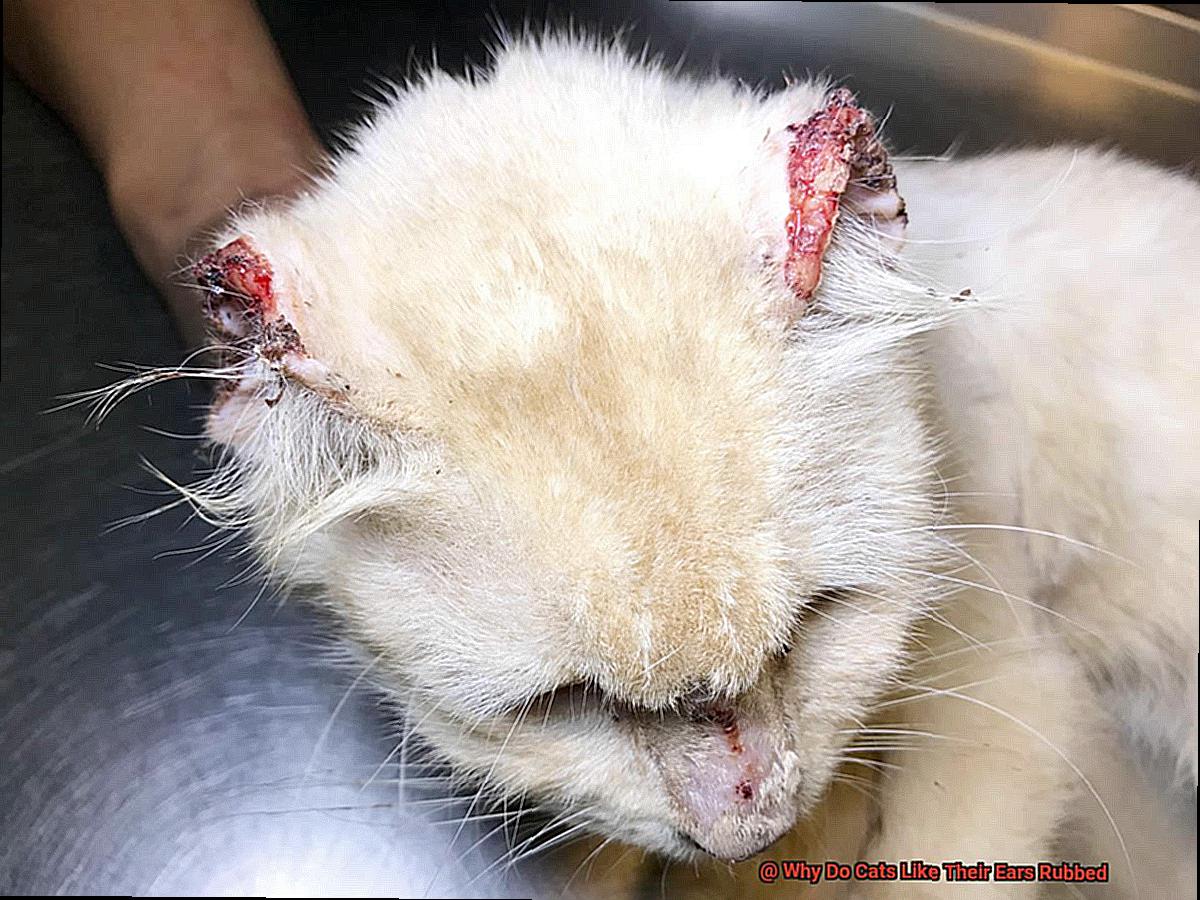
The outer ear comprises the ear flap, which acts as a receptor to catch sounds, and the ear canal, which transfers sounds to the eardrum, separating the outer ear from the middle ear. The middle ear, home to small interlinked bones, transmits sound vibrations to the inner ear.
The inner ear contains two unique parts that make our feline friends so sensitive to touch and sound.
The cochlea, a spiral-shaped organ, detects sound vibrations and converts them into electrical signals to be sent to the brain, giving cats their exceptional hearing.
Meanwhile, the vestibular system in the inner ear controls your cat’s balance and spatial orientation by detecting changes in their head position and movement.
With all of these parts working together seamlessly, a cat’s ears have incredible sensitivity to touch, and it all starts with the pinna and ear canal. These parts are supplied with a complex network of nerves that react to pressure and movement, enabling cats to detect the distance and source of sounds.
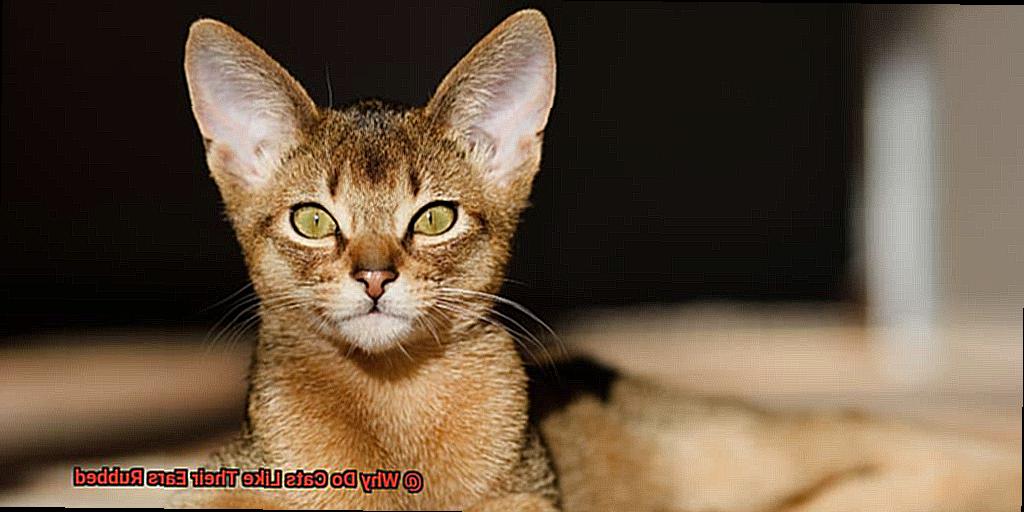
In addition, the hair cells in the cochlea and vestibular system are highly sensitive to tiny vibrations, giving cats an edge in their environment.
The Release of Endorphins
Well, the reason behind it is a scientific one. The simple act of rubbing your cat’s ears can create a chemical reaction in their body, leading to the release of endorphins, which are nature’s “feel-good” chemicals that induce pleasure and happiness.
Endorphins are natural chemicals produced in the body, acting like morphine. They help alleviate pain and promote general well-being.
So when you stroke your cat’s ears, it activates the release of these endorphins, triggering feelings of comfort and relaxation.
Not only does the physical act of rubbing the ears have a calming effect, but your cat’s ears also have many nerve endings that connect to the parts of their brain that regulate emotions and stress levels.
When stimulated, these nerves signal the brain to release endorphins, reducing anxiety and creating a sense of calmness.
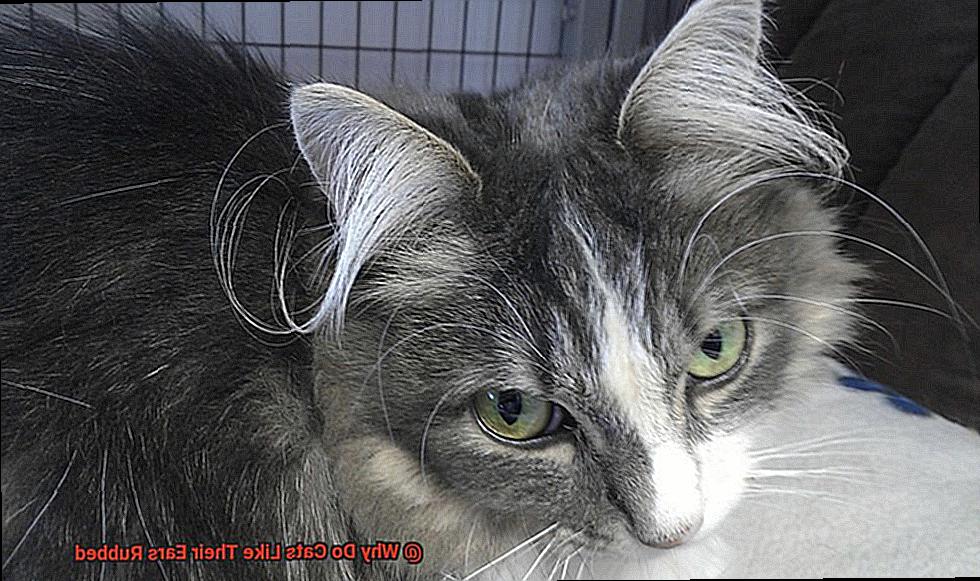
If your cat has chronic pain or anxiety, a gentle ear rub from their favorite human can bring them much-needed relief and extra comfort. It is a natural and effective way to bond with your furry companion while promoting their overall well-being.
Social Behavior of Cats
When cats groom, they build stronger connections with each other, and this behavior goes beyond basic hygiene.
Ear rubbing is another way that cats communicate affection and trust in their social interactions. If you’ve ever petted a cat, you may have noticed how they love having their ears rubbed.
The ear area is incredibly sensitive, and this action brings them pleasure and comfort, releasing feel-good hormones like endorphins. Ear rubbing also strengthens their social bonds by marking each other with their unique scent signature.
Cats often groom each other by rubbing their ears. It’s an act of acceptance, trust and helps them build a deeper connection.

Ear rubbing replicates this behavior, allowing cats to feel calm, happy, and loved by their human counterparts. Regular ear rubs are an excellent way to improve your relationship with your feline friend.
But remember, every cat is unique and has individual preferences when it comes to social behavior. It is crucial to observe your cat’s behavior, body language, and reactions to understand their preferences. This approach helps build a healthy, trusting relationship with your furry friend and may encourage them to approach you more often for affection.
In conclusion, grooming is a crucial social behavior for cats that helps strengthen their social connections.
Ear rubbing is an excellent way to replicate this behavior, bring pleasure and strengthen the bond between cats and their human friends. Understanding your cat’s behavior and preferences will ensure that you have a healthy, loving relationship with your feline friend.
Scent Glands
Cats have scent glands on their ears that produce pheromones – those secret messages that cats use to communicate with each other. And when your cat rubs its ear on something, it’s like saying, “Hey, this is mine. This is my safe space.”
But when you take the time to rub your cat’s ears, you’re not only spreading its scent, but you’re also releasing endorphins that can help boost your cat’s mood and ease any pain they may be feeling. So, it’s no wonder that your cat loves those ear rubs from you.
But, those scent glands on your cat’s ears can also give you important clues about your cat’s emotional state and overall health. When your cat produces pheromones that have a calming effect, they’re telling other cats that they’re feeling relaxed and content.
But if your cat produces pheromones that signal danger, it could mean that they’re feeling anxious or stressed.
Why Some Cats Don’t Like Their Ears Rubbed?
While most cats love getting their head and chin scratched, some are not big fans of having their ears touched. Let’s delve into some reasons why this might be the case.
Medical issues
One major reason why some cats may not like ear rubbing is due to medical issues. If your cat has an ear infection or inflammation, touching or rubbing their ears could cause them great discomfort.
So, if your cat seems uncomfortable when you touch their ears, it’s crucial to have them checked out by a veterinarian. It’s better to be safe than sorry, right?
Past traumas
Another reason why cats may not enjoy ear rubs is because of past traumas. For instance, if a cat has experienced an ear cleaning procedure that didn’t go well or suffered from aggressive ear tugging from another animal, it could make them associate the sensation with pain or discomfort, causing them to resist ear rubs.
It’s important to remember that every cat has its unique preference when it comes to petting or touching, including how they like their ears rubbed.
Some cats may positively thrive on ear rubs, while others may not enjoy them as much. Therefore, it’s vital to pay keen attention to your cat’s body language and reactions when touching their ears to determine what they like.
How to Properly Rub Your Cat’s Ears
Here, we’ve outlined some easy steps to help you rub your cat’s ears correctly while keeping them comfortable and happy.
The Anatomy of a Cat’s Ear
First things first, it’s essential to know that a cat’s ears have three parts: the ear flap or pinna, the ear canal, and the middle and inner ear. To start with proper ear massaging, focus on the base of the ear near the head and avoid touching the ear flap, as it’s too sensitive. Massaging and cleaning the ears’ inner edges and the fur surrounding the base will keep them healthy and comfortable.
Approach with Care
Before rubbing your cat’s ears, choose a calm and relaxed environment for your feline friend. Petting other parts of their body first can help them feel more comfortable. Check for signs of infection, injury, or irritation in the ears before touching them. Keep an eye out for any signs of distress or agitation before proceeding with ear massaging.
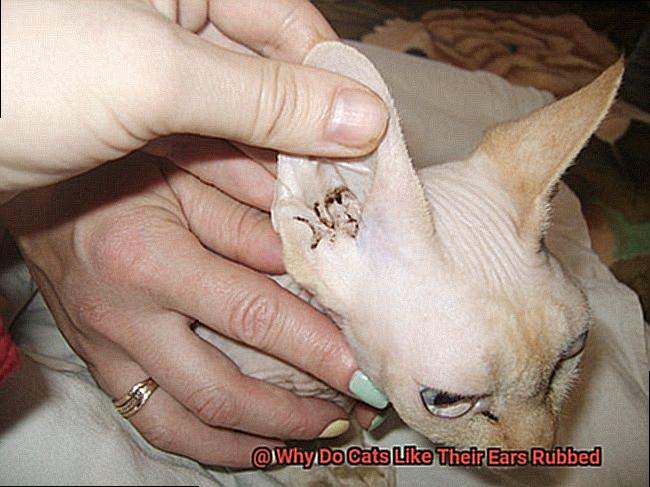
Focus on the Base
Start massaging your cat’s ears by using light circular motions and gentle pressure with the tips of your fingers. Don’t pull or tug on the ears, as it can cause discomfort or even pain. Instead, focus on massaging the base behind the ears, as that’s where most cats enjoy being touched.
Let Your Cat Be Your Guide
Observe your furry friend’s body language while you massage their ears. If your cat seems uncomfortable or pulls away, stop immediately and respect their boundaries. If your cat leans in or purrs, they’re likely enjoying the massage, so feel free to continue.
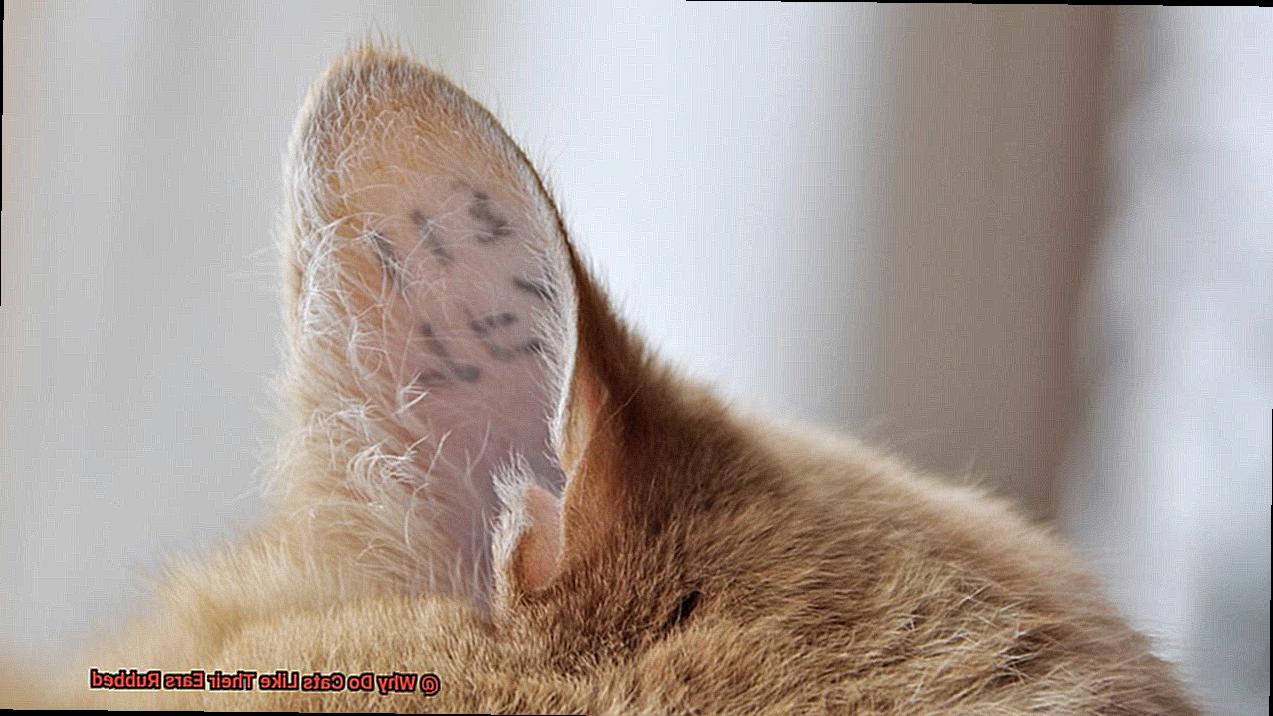
Reward Your Feline Friend
After a successful ear massage, reward your cat with their favorite treat. It’s an excellent way to reinforce positive behavior and create a stronger bond between you and your furry friend.
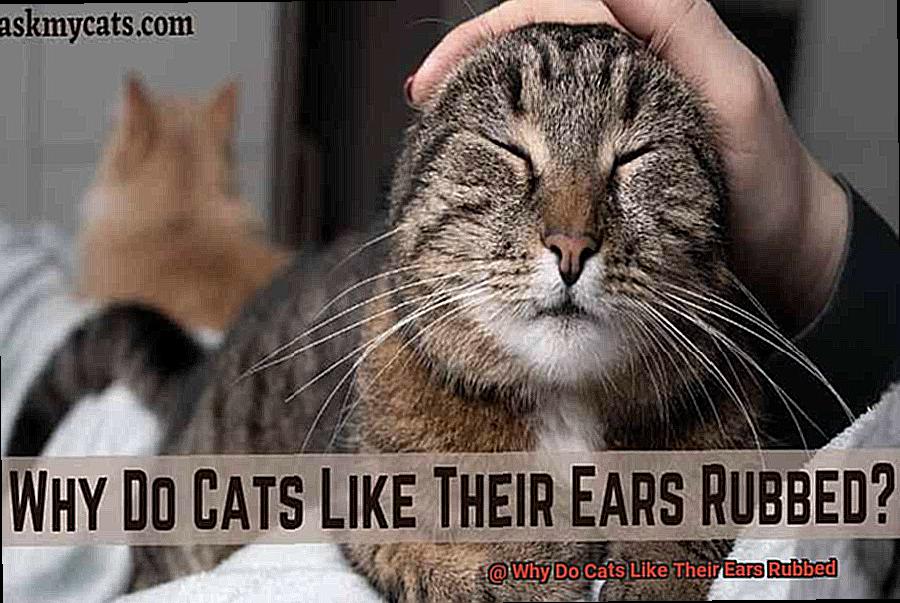
Remember, the key to properly rubbing your cat’s ears is to be gentle, mindful and attentive.
Other Ways to Show Affection
We all know that giving our furry friends affection is vital for a healthy and happy relationship. While petting and ear-scratching are well-known ways to show your cat love, there are many other gestures that your feline friend will appreciate.
Rubbing Their Cheeks
Do you ever find your cat rubbing its cheeks against you? This act is a clear sign of affection as the scent glands in their cheeks are marking you as their own. By scratching their cheeks or even gently petting them, you can give them a satisfying scratch and create a special bonding moment between you two.
Rubbing their chin
Another way to show some tenderness to your cat is to softly rub their chin. These glands under their chin release pheromones that create a calming and peaceful effect on your cat, making it an excellent way to show them that you care.
Talking to your cat
In addition to this, talking to your cat in a soothing tone is another way to show your love. Believe it or not, cats love to listen and engage in conversation, so whether you’re telling them about your day or having a chat, they’ll be happy to sit and listen.
Playing with your cat
Playing with your cat is also a great way to bond and show affection. It not only makes them happy, but it also helps them stay active and healthy. Taking time out of your day to play with your cat will help create a stronger bond between the both of you.
To sum it all up, from cheek-scratching to playtime, there are numerous ways to show your cat that you love them. By spending quality time playing and engaging with your cat, you’ll establish a strong bond that will last a lifetime.
Importance of Knowing Your Cat’s Likes and Dislike
Cats are not like their canine counterparts; they have their own ways of expressing love and affection. By understanding your cat’s likes and dislikes, you can create a stronger bond and improve their overall well-being.
Just like us humans, cats have their favorite things. By discovering what those things are, you can use them to bond more deeply with your cat. For example, some cats love chin rubs or ear scratches, and indulging these pleasures can be a great way to show your pet that you care. Plus, who doesn’t want a happy cat in their life?
Knowing your kitty’s preferences can also be helpful when it comes to their health. If your cat has a distaste for a certain type of food, you can avoid it and find something more to their liking.
Similarly, knowing which toys your cat prefers can make playtime more enjoyable for everyone involved. When you show your cat that you respect and appreciate their likes and dislikes, they are more likely to be cooperative when it comes to things like taking medication or going to the vet.
By catering to your cat’s preferences, you will be building a stronger and more loving relationship.
Conclusion
To sum up, the reasons why cats adore having their ears rubbed are due to a mix of factors including their intricate ear design, the release of endorphins, their sociable nature, and the presence of scent glands.
If you want to foster a closer relationship with your kitty, it’s important to pay attention to their body language and understand their preferences. By doing so, you can help enhance your pet’s well-being and joy.
Don’t be shy to pamper your feline friend with a soothing ear rub or chin scratch, bond with them through conversation and play, and shower them with the affection they deserve.

